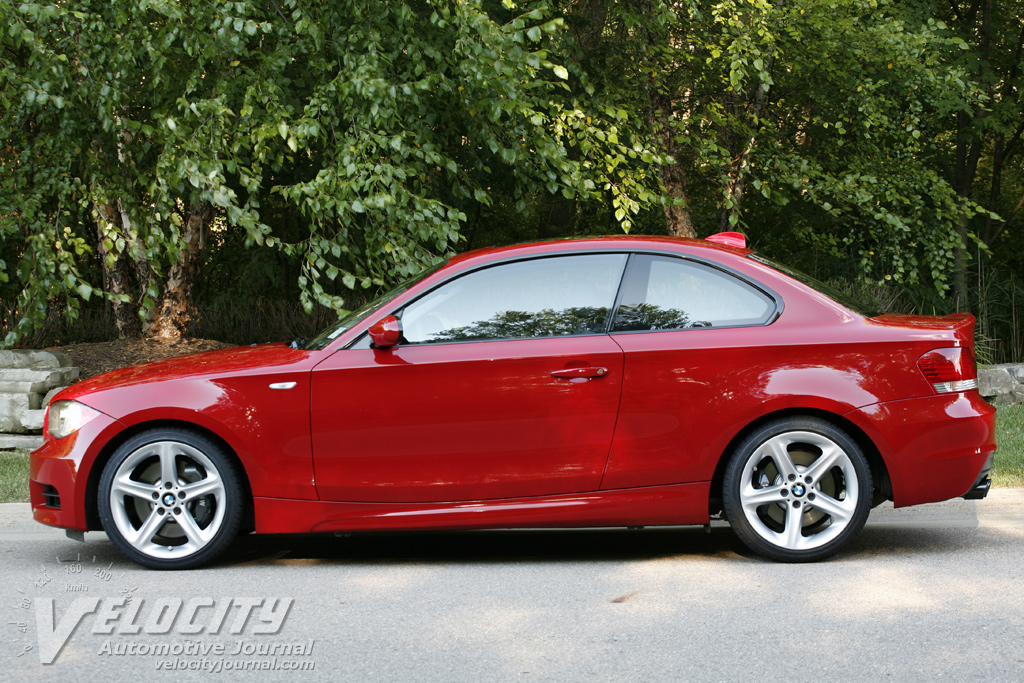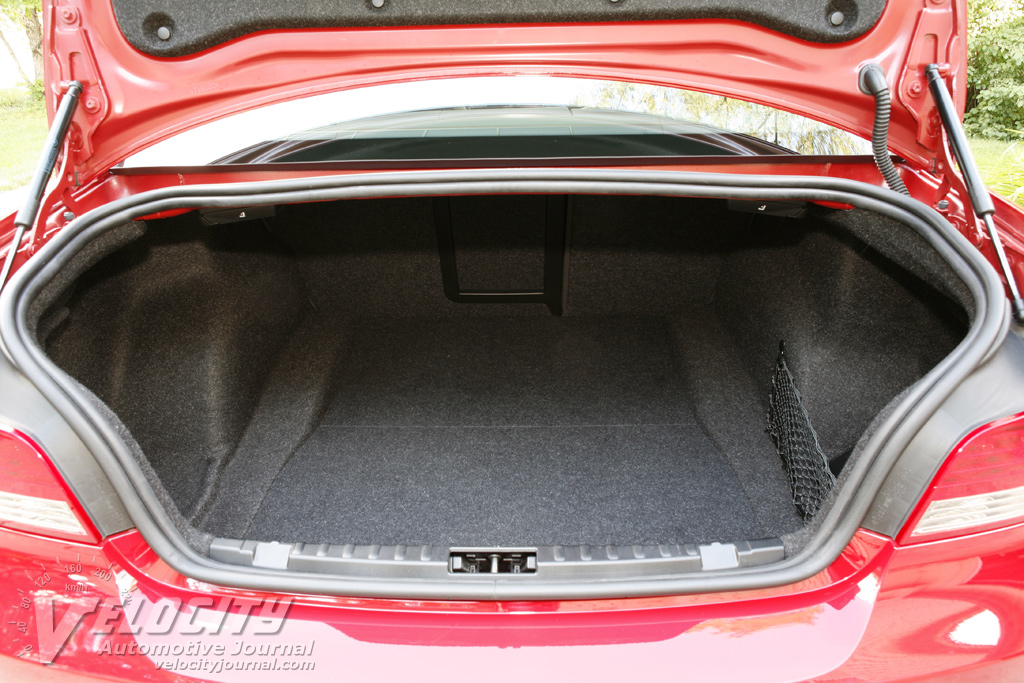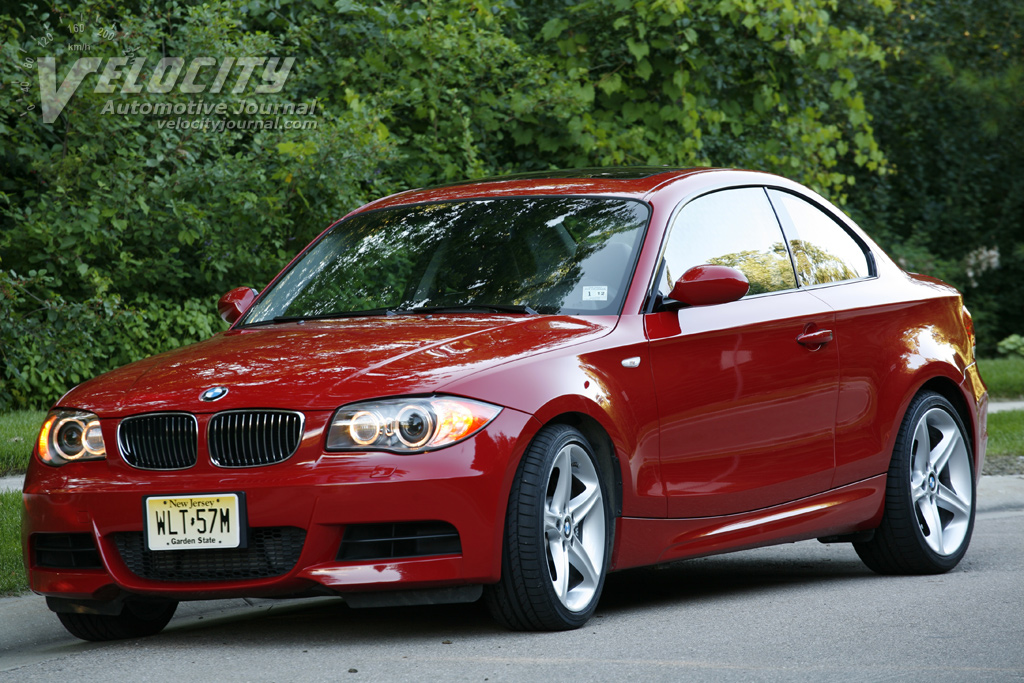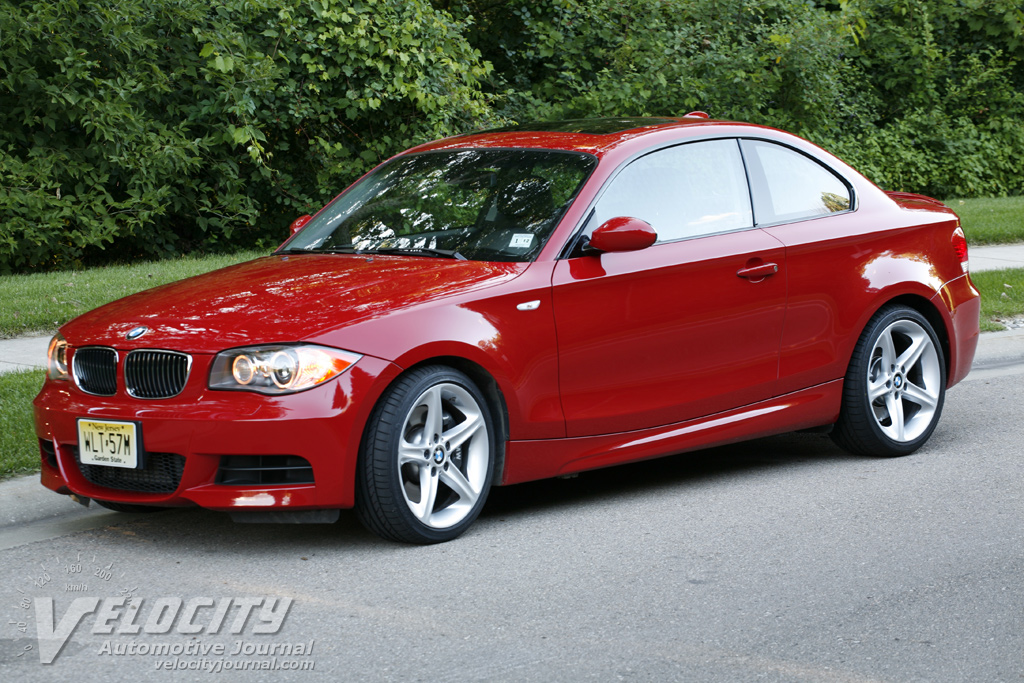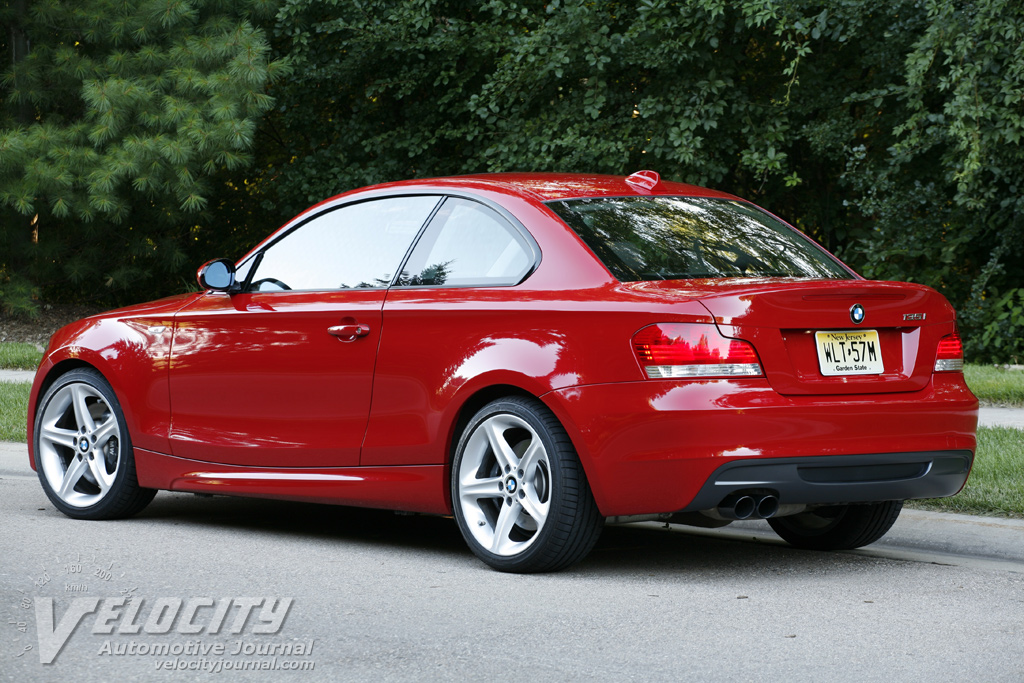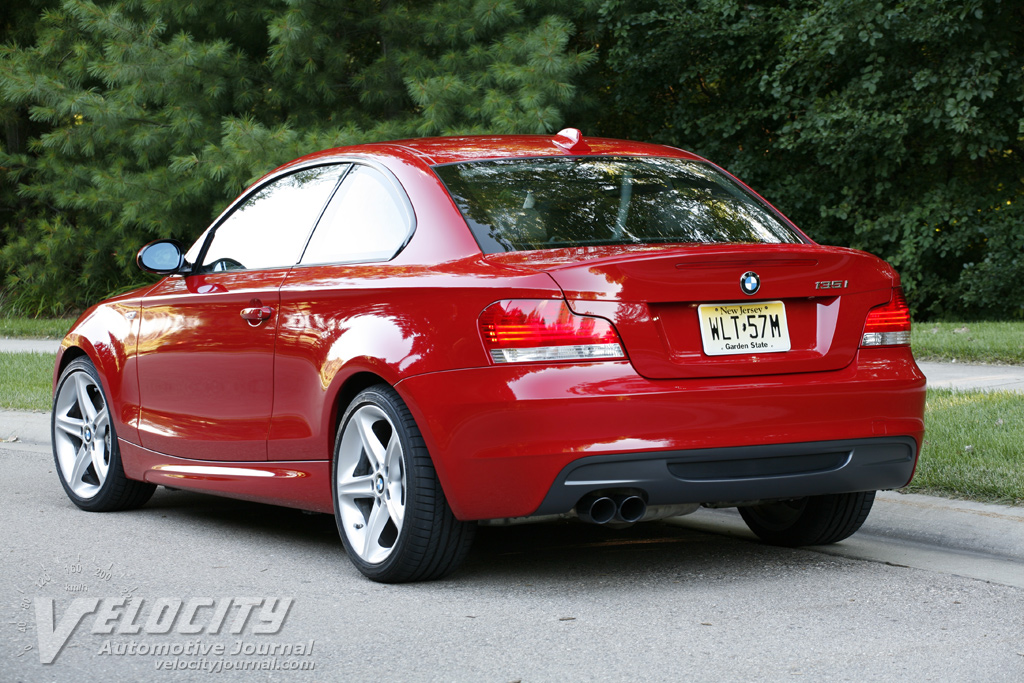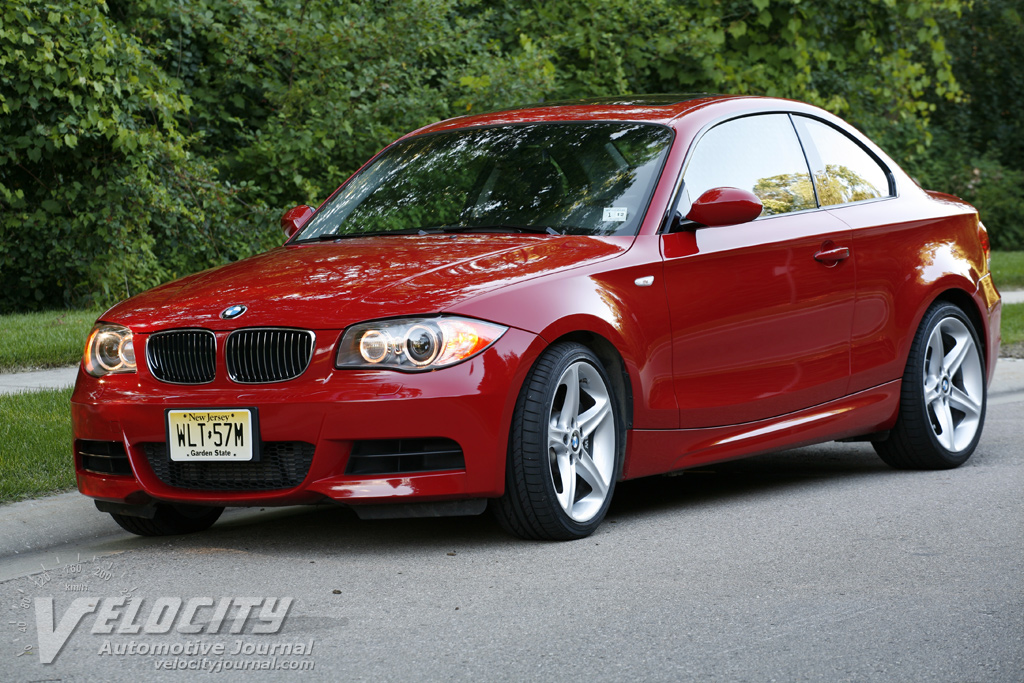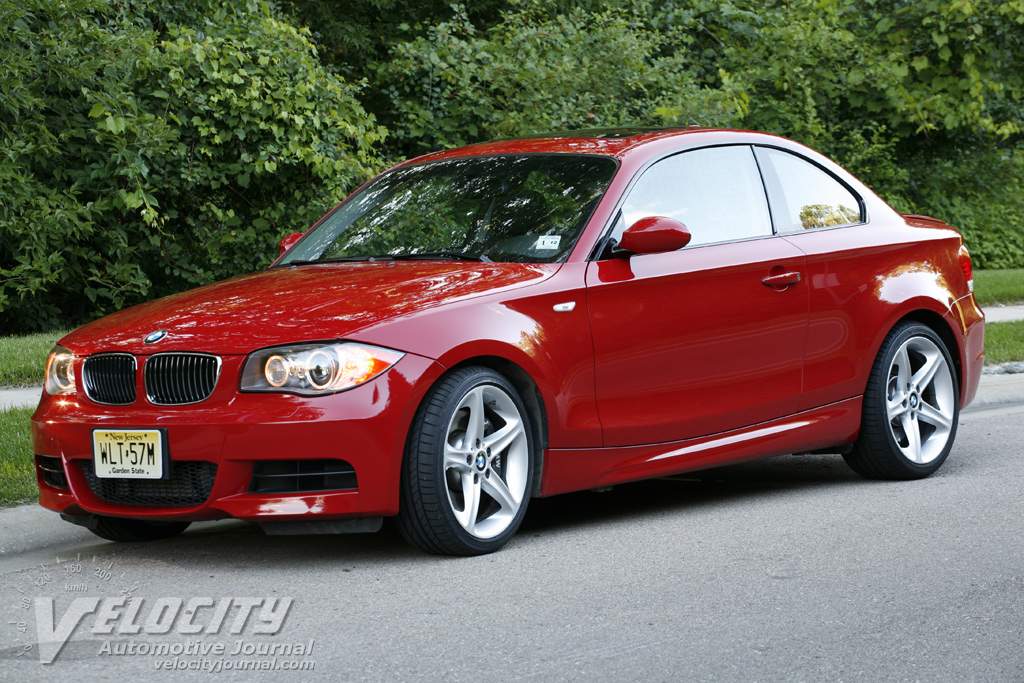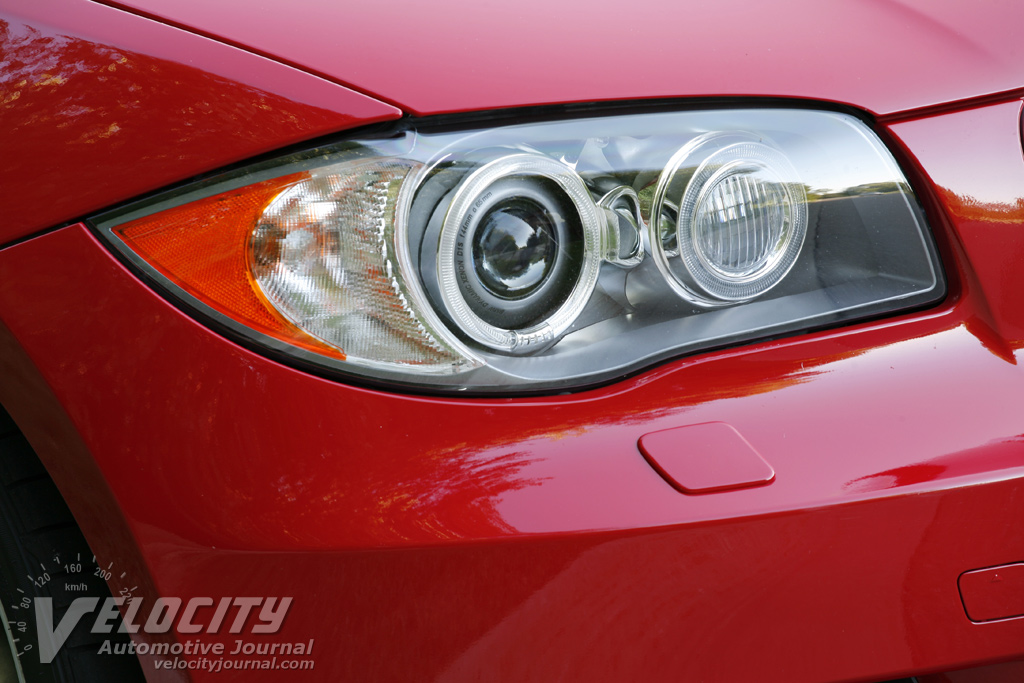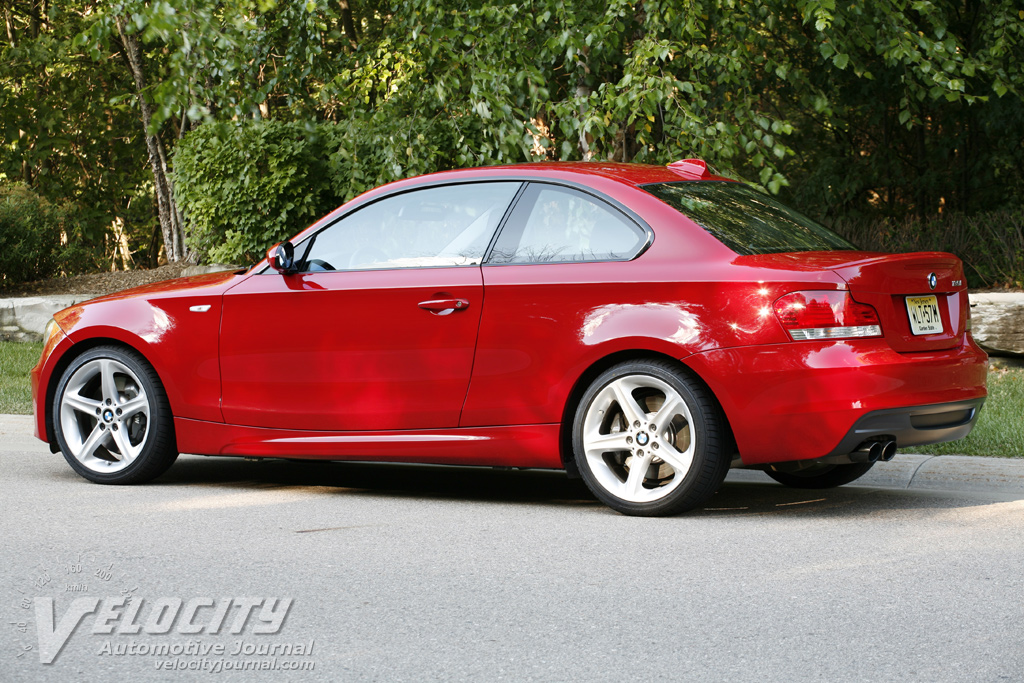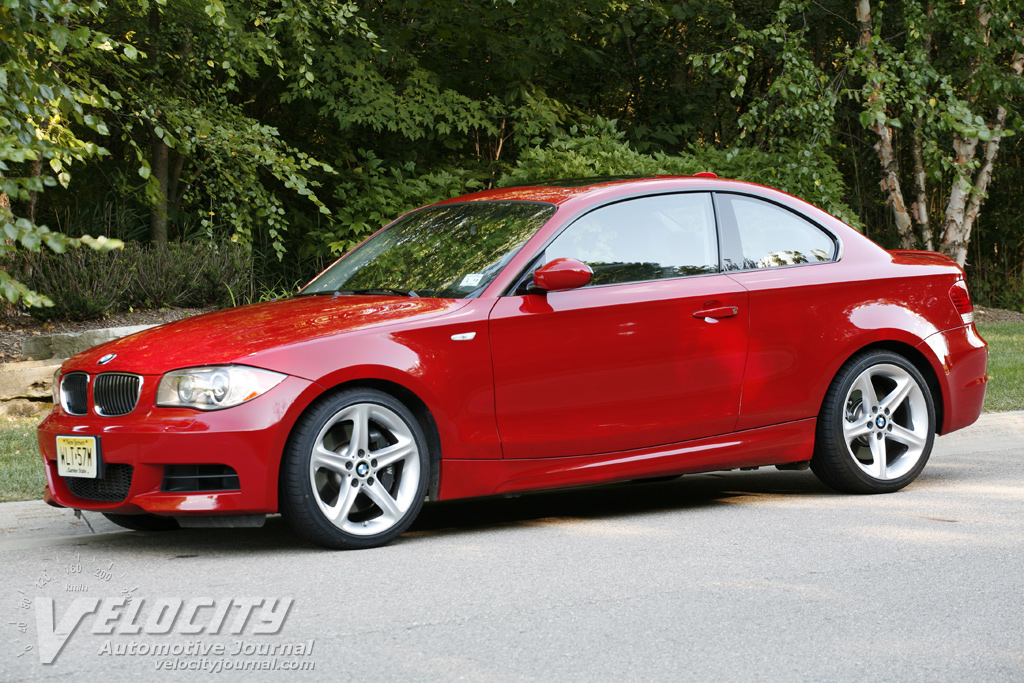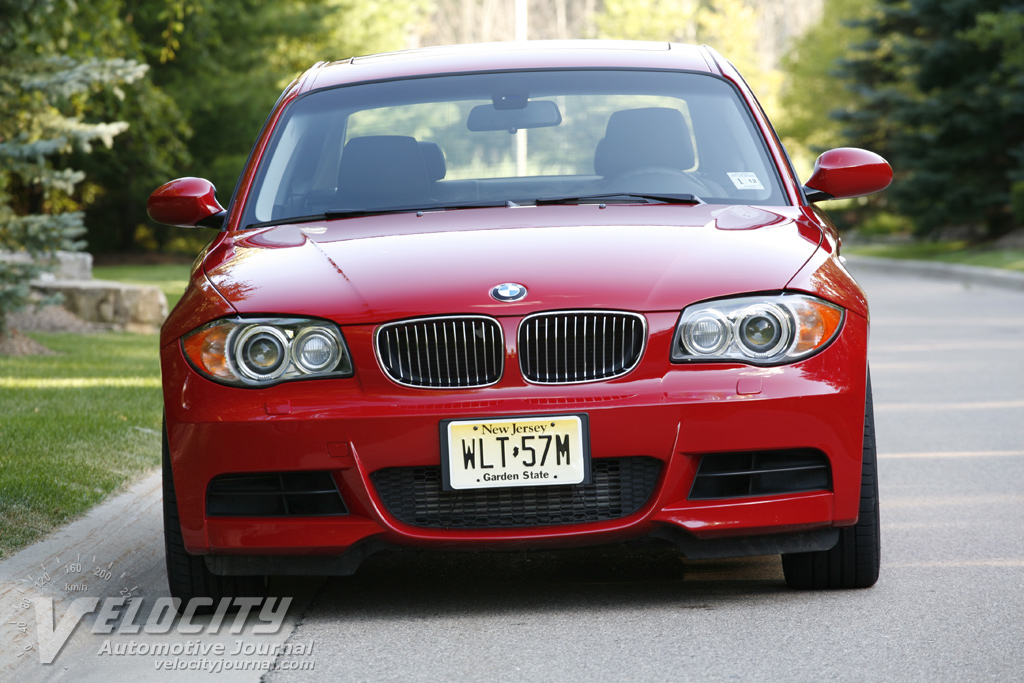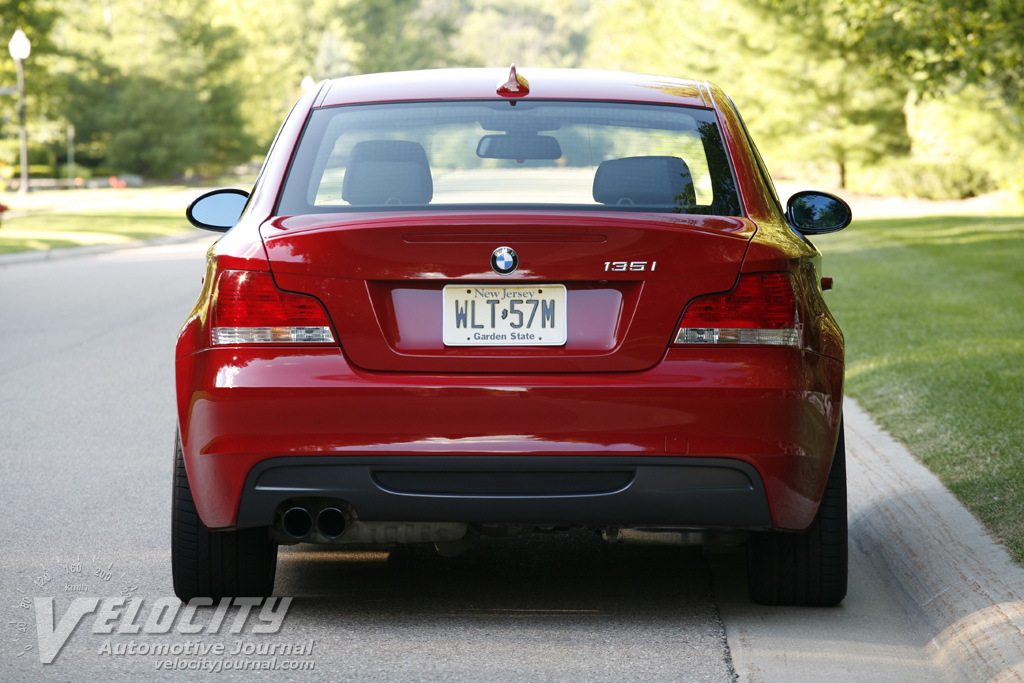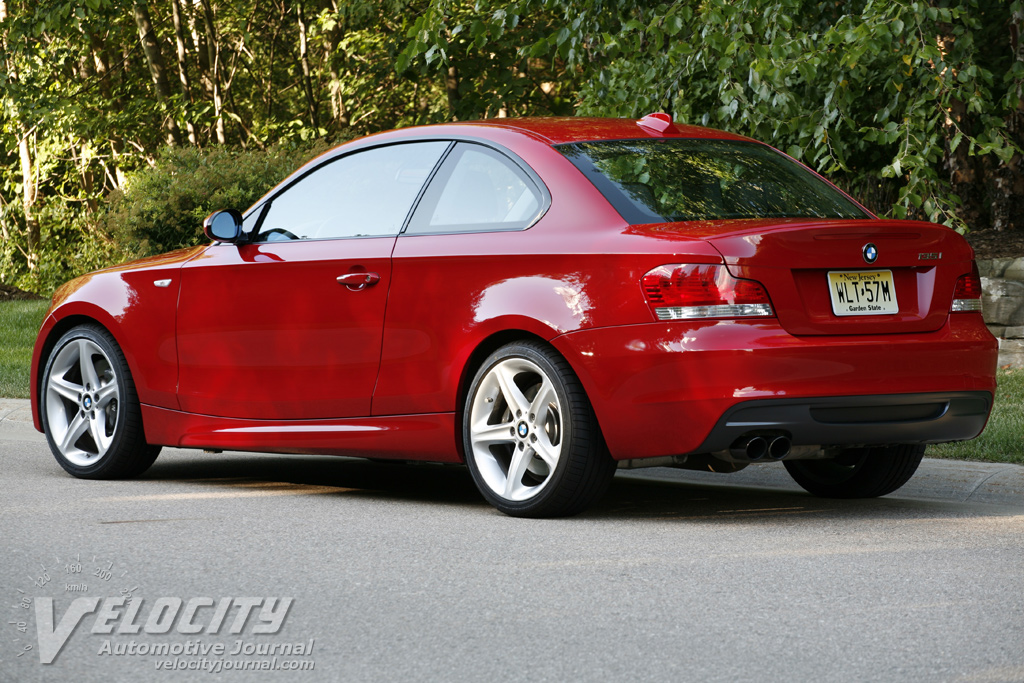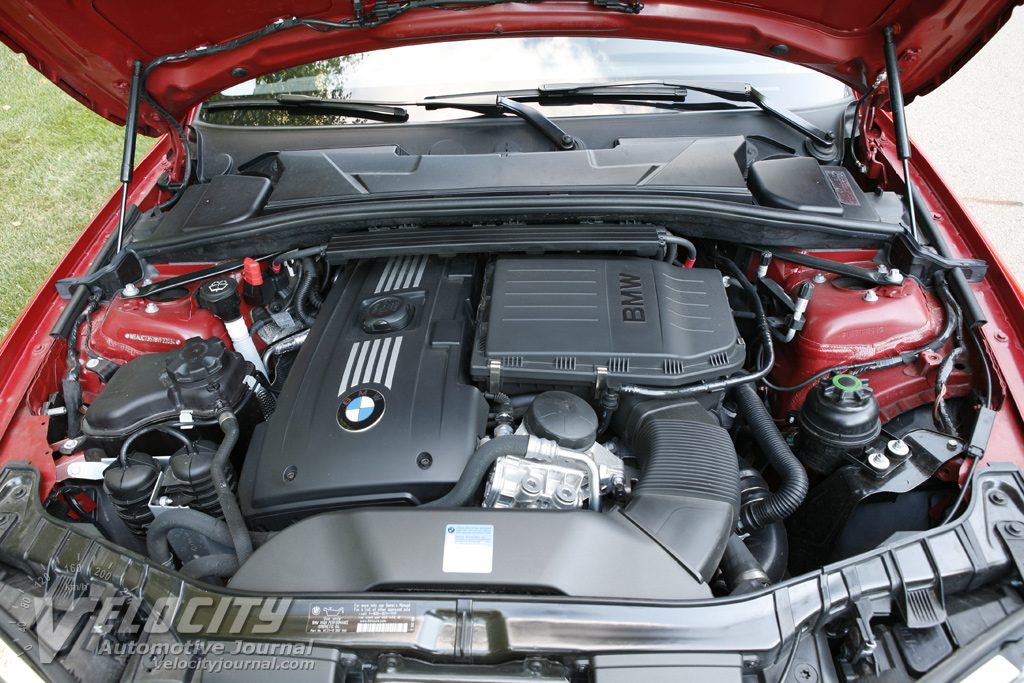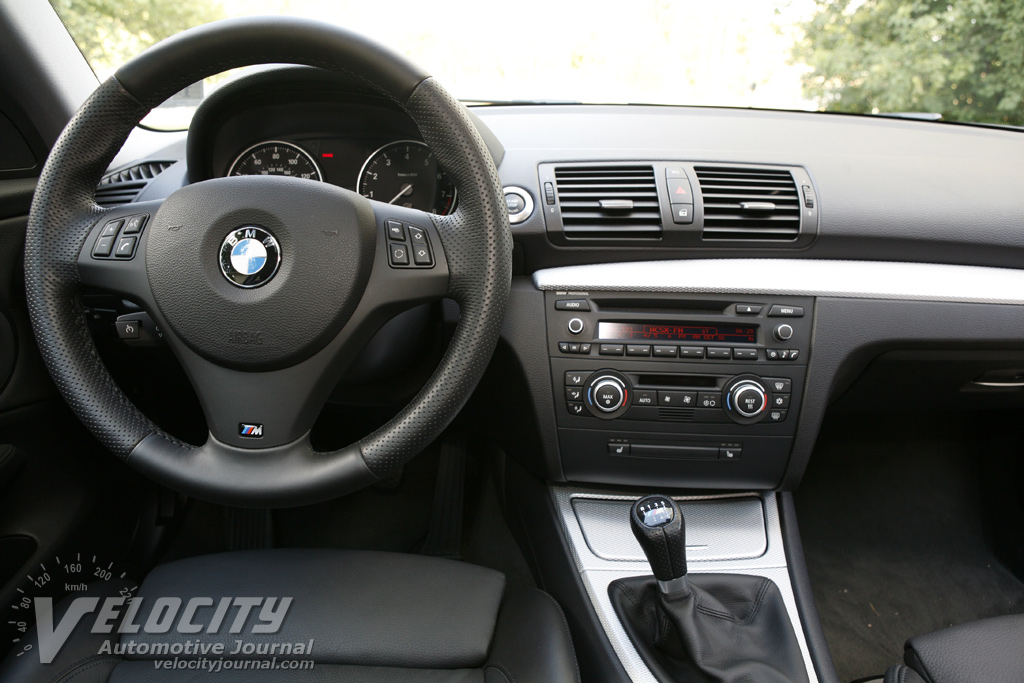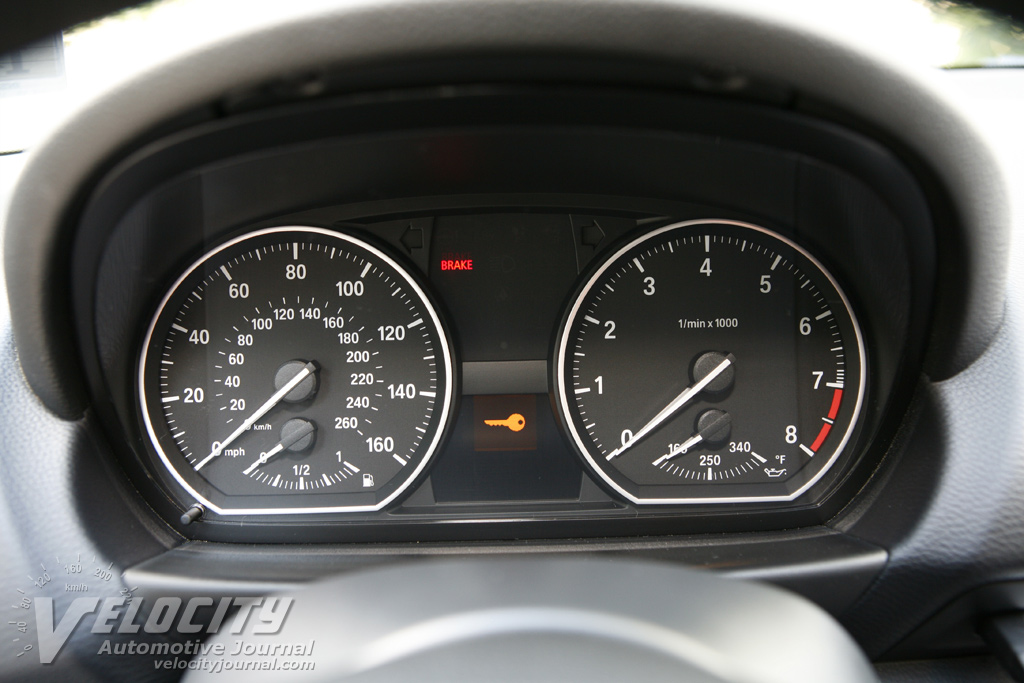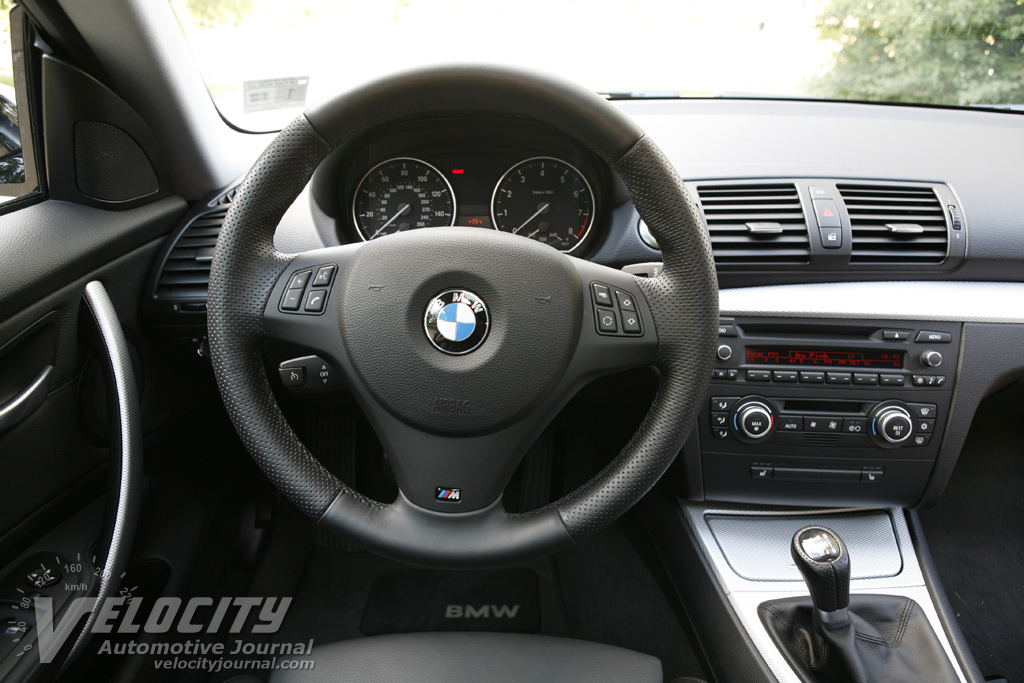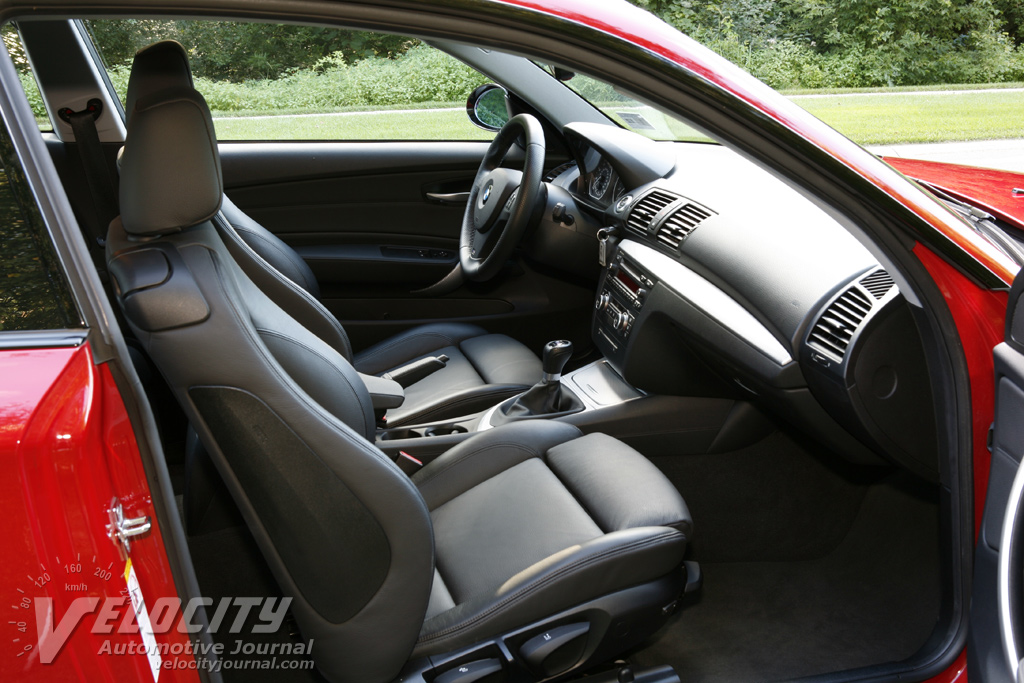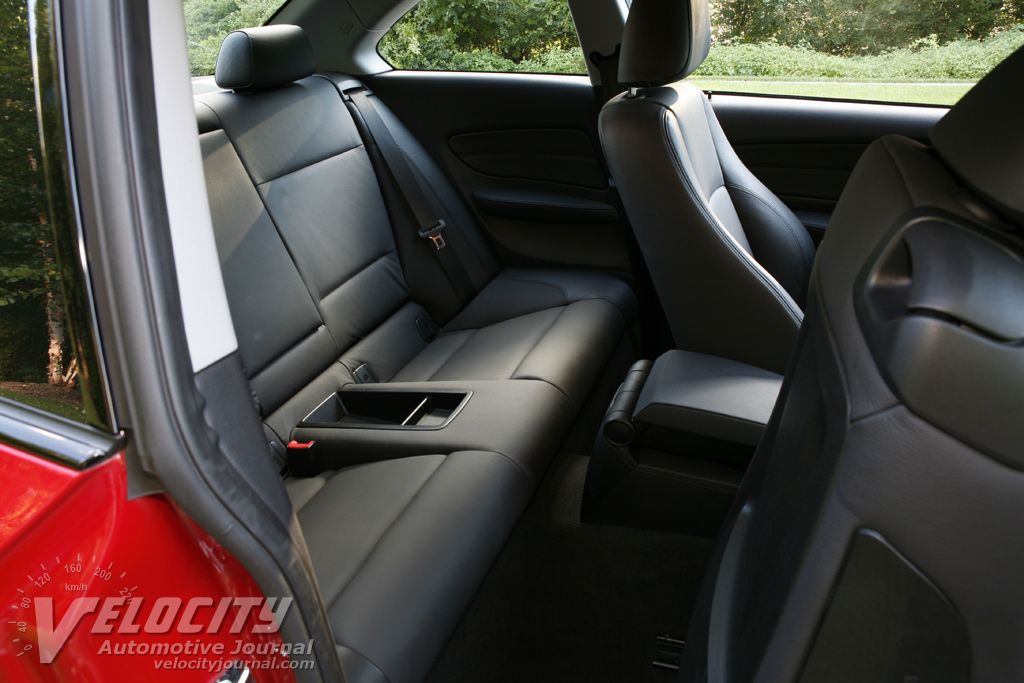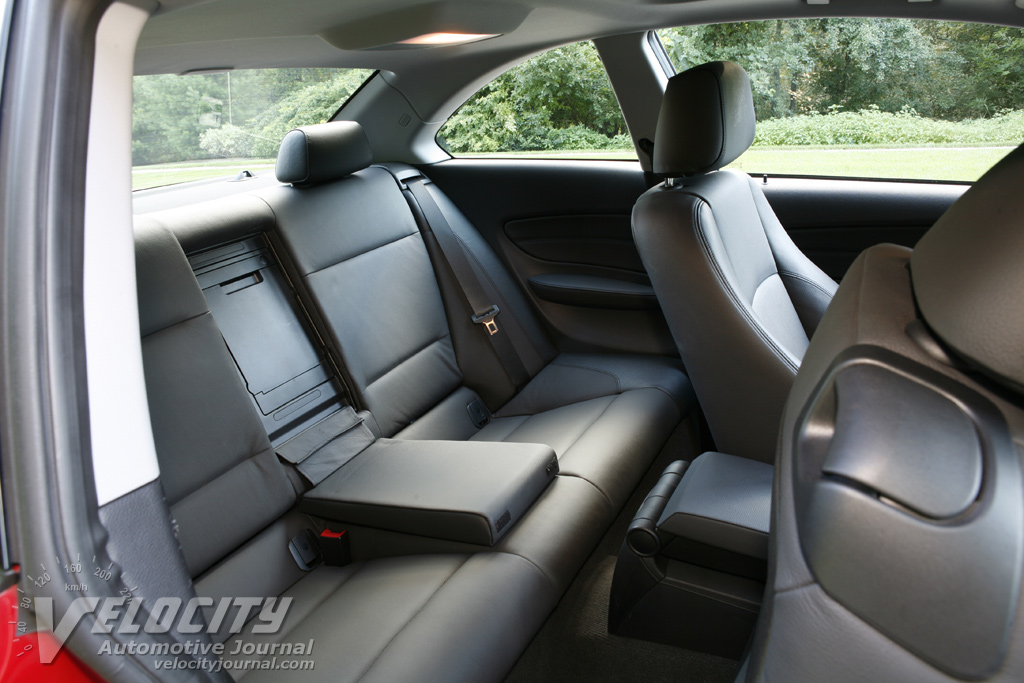2008 BMW 135i Coupe
08/15/2008
Shahed Hussain
As the 3-Series became larger and more luxurious, its price crept up as well, which opened up room at the bottom of the BMW lineup for the smaller 1-Series. Available only as a coupe and convertible in the US, BMW also sells a 5-door hatchback version of the 1-Series in Europe. Powerplant options mirror that of the 3-Series: a normally aspirated 3.0L inline-6 with 230-bhp (128i) or a twin-turbo variant that cranks out 300-bhp (135i). Unlike the 3-Series, all 1-Series models are available with rear-wheel drive only.
We tested a moderately optioned 135i Coupe ($34,900) equipped with Black Boston leather seats ($1,450), Cold Weather Package ($600), Sport Package ($1,000), and iPod/USB adapter ($400). Total sticker price was $39,125, including the $775 destination charge. Usually, most press fleet vehicles are loaded with extraneous options, but the 135i we drove was equipped similarly to how we would prefer, although the $875 Premium hi-fi upgrade is worth considering. Other significant options include a 6-speed automatic ($1,325), Active Steering ($1,400), navigation system ($2,100), power front seats ($995), satellite radio ($595), Park Distance Control ($350), and BMW Assist with Bluetooth ($750).
Few other automakers have entries that compete directly with the 135i; roughly comparable vehicles such as the Infiniti G37 Coupe, Nissan 350Z, Mitsubishi Lancer Evolution, and Subaru Impreza STI compact sedans offer comparable performance. Only the larger G37 matches the 135i for its blend of performance and 4-seat accommodations in a 2-door coupe design. A G37 Coupe Sport 6MT equipped similarly to the 135i would be around $39K, so the sleek Infiniti is definitely worth cross-shopping against the lighter BMW.
Although BMW gave the 1-Series a unique interior layout, it inherits several design elements from the more expensive 3-Series BMWs; instrument panel gauges, climate control, and the audio system are essentially identical. Textured aluminum trim on the dashboard and center console contrasts with the predominantly gray interior hues (various wood veneers are optional). The optional Sport Package includes 8-way manually adjustable sport seats and an "M" steering wheel. A short-throw "M" shifter, capped with a perforated leather knob, links to the standard 6-speed manual transmission. Behind the shift lever are dual cupholders for the driver and front passenger. Portable MP3 players can be connected to the audio system via the optional iPod/USB adapter located under the center console armrest.
Despite having mostly manual adjustments, the optional sport seats provide superb support and comfort; extendable thigh cushions and power torso bolsters accommodate most passengers. The fat "M" steering wheel is wrapped in padded perforated leather that is easy to grip; buttons for Bluetooth phone and audio controls are integrated on the spokes. The uncomplicated instrument panel has a 160-MPH speedometer and 8,000 RPM tachometer, with smaller fuel level and oil temperature gauges at the bottom. A compact driver information display shows exterior temperature and trip computer data. Replacing the ignition key is an engine start/stop button on the dashboard that fires up the inline-6, but only if the key fob is inserted in its slot below. The standard audio system has a somewhat complex interface and cryptic abbreviations that may require a peek at the owner's manual. Similarly, the dual-zone climate control buttons have some baffling symbols that aren't easy to decipher; fortunately, most commonly used functions are clearly understandable.
Even though the rear seats will accommodate two passengers, most adults will find both headroom and legroom inadequate. While short trips are tolerable, the back seats are best suited for shorter occupants; nonetheless, for those who do fit, the seats offer better than average comfort. The folding armrest flips down to reveal a pass-through to the trunk; an included ski sack prevents dirty skis from soiling the interior.
What really draws driving enthusiasts to the 135i is its superb powertrain: a smooth 3.0L inline-6 with twin turbochargers. With 300-bhp @ 5,800 RPM and 300 lb.-ft. of torque stretching from 1,400-5,000 RPM, this straight-six pulls like a locomotive at any speed. BMW engineered the turbochargers to be completely unobtrusive in operation; turbo lag is nonexistent, yet no sudden surge of acceleration betrays the dual turbos at work. Highway roll-on acceleration in 6th gear is so impressive that a downshift is rarely required. Drop down a couple of gears, and the 135i will snap your head back as it surges ahead, accompanied by a throaty rumble from the dual-outlet exhaust. BMW claims a 0-60 MPH time of 5.1 seconds for the 135i when equipped with the standard 6-speed manual; top speed is limited to 150 MPH. The EPA rates the 135i at 17/25 MPG (city/hwy.); we managed just under 24 MPG in mostly highway driving.
With such a torque-laden powerplant, shifting the close-ratio 6-speed manual is often a matter of convenience. Grip the short-throw "M" shift knob and it snicks between gears easily; shift gates are closely spaced, so occasionally we got fifth gear instead of third, but additional familiarity with the gearbox should minimize misjudged shifts. Aiding fluid gear changes is a progressively engaging clutch.
No BMW would be complete without serious brake hardware; the 135i has vented discs all around: 13.3-inch diameter (front) and 12.8-inch diameter (rear). The standard Sport Suspension adds 6-piston front calipers and 2-piston rear calipers. With the 135i weighing in at a relatively light 3,373 lbs., the massive brakes have no trouble hauling down this coupe from any speed with complete assurance. Superb brake feel and a firm pedal encouraged us to push the brakes hard, but brake fade was nonexistent in typical conditions.
The 135i gets its sharp steering reflexes from a precise rack-and-pinion system; steering effort at parking lot speeds is above average, but lightens up considerably once underway. Road surface textures are telegraphed directly via the fat-rimmed steering wheel. Mild understeer is the predominant handling characteristic, but we left the DTC stability control engaged to prevent power-on oversteer under heavy throttle, a distinct possibility with 300 lb.-ft. of torque available.
BMW retains its familiar suspension layout consisting of front struts, aluminum lower arms, coil springs, and anti-roll bar; at the rear is a five-link design with coil springs, dampers, and an anti-roll bar. The standard Sport Suspension includes 18-inch alloy wheels shod with Bridgestone RE050A Y-rated run-flat tires: 215/40R18 (front), 245/35R18 (rear). Optionally available are 17-inch alloy wheels with all-season tires. Out on the highway, the 135i remains amazingly planted at speeds well over the legal limit. Despite the stiff sidewalls of the run-flat Bridgestones, the 135i rides compliantly over most surfaces; occasionally the suspension stumbles over severe frost heaves and potholes, but we think it is an acceptable tradeoff for superb handling on properly maintained roads.
We were impressed with the dynamic abilities of the 135i, which is arguably the best performance value in the entire BMW lineup. A blend of superb acceleration and tight handling wrapped in a relatively understated exterior design, the 135i is bound to appeal to both new and long-standing BMW customers; especially those who fondly remember the nimble reflexes of the previous 3-Series coupes. In its market segment, the 1-Series has few peers, simply because most other manufacturers don't offer a powerful rear-drive coupe in such a tidy package. At just over $39K, this BMW certainly isn't inexpensive; some customers may consider the similar 128i a better value, or prefer a lightly-optioned 328i for about the same price, but neither of these coupes can match the raw performance or sheer driving pleasure of the 135i.

